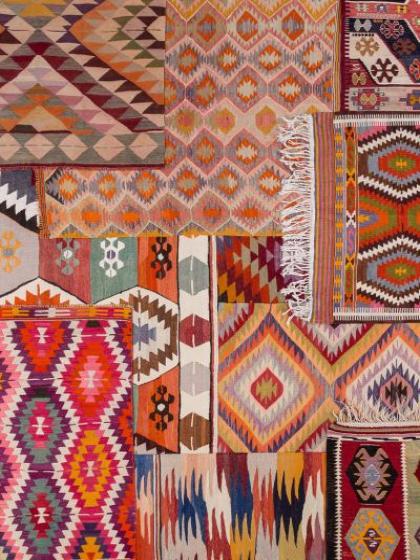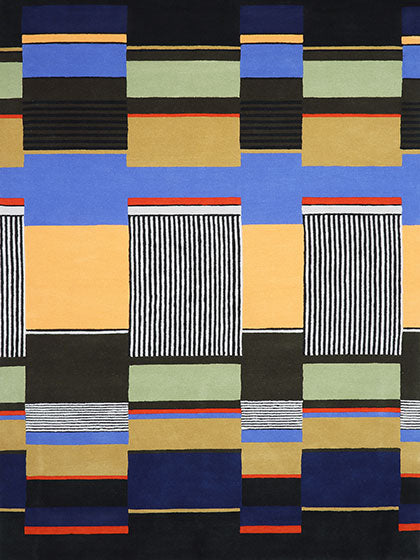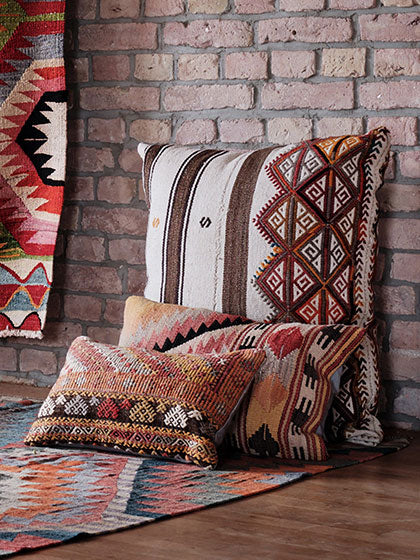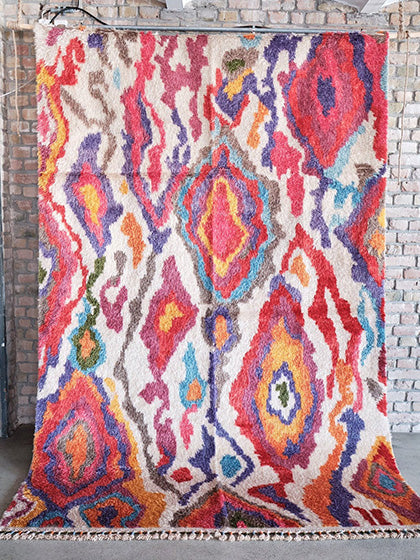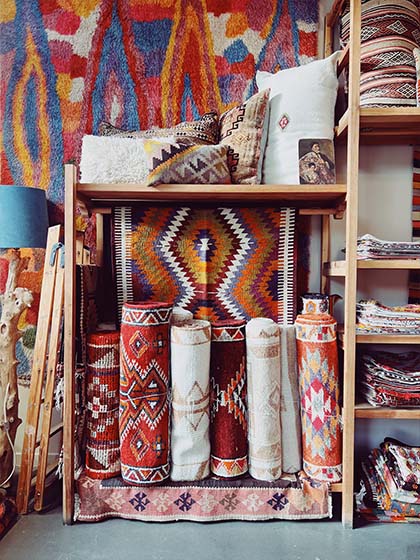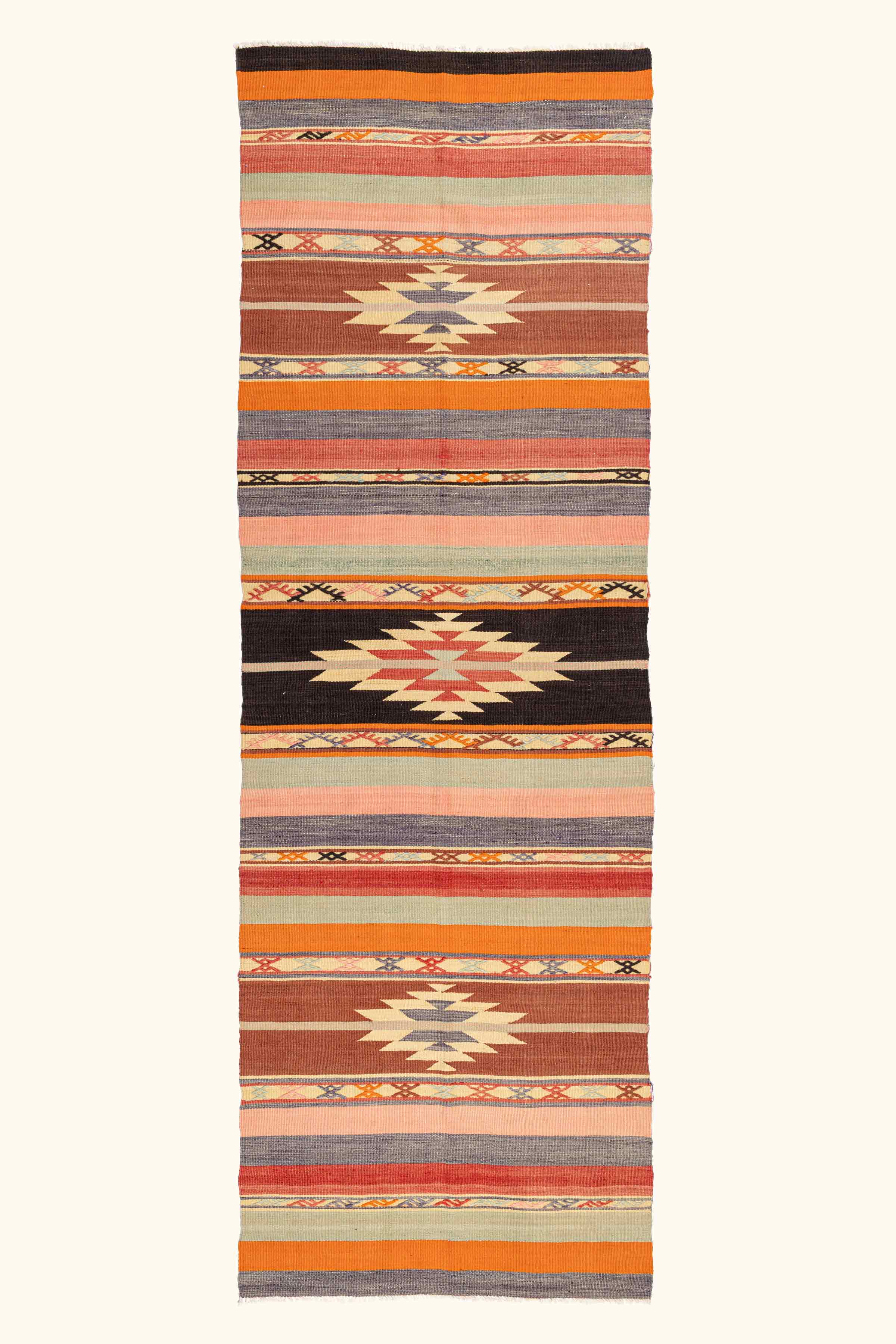
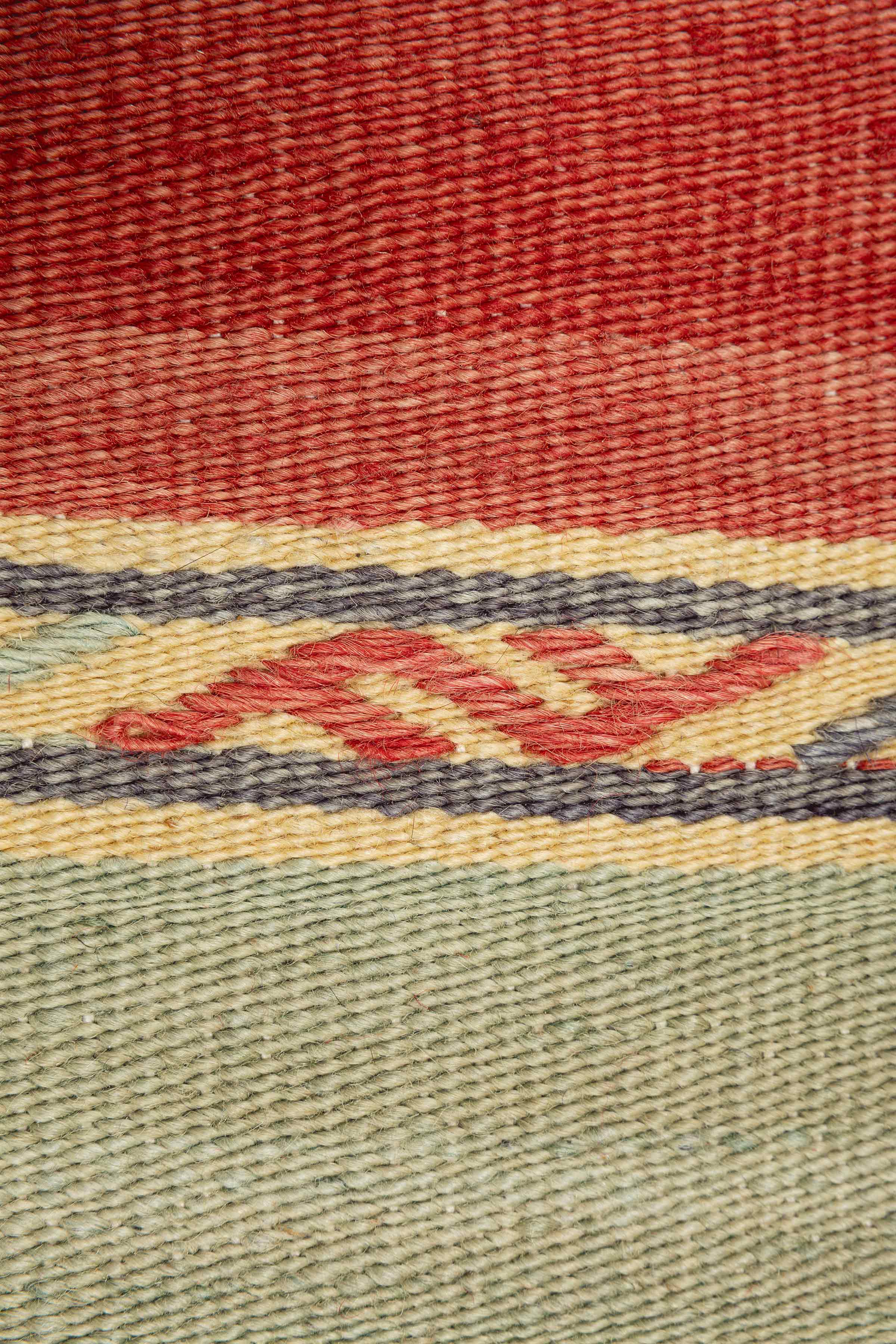



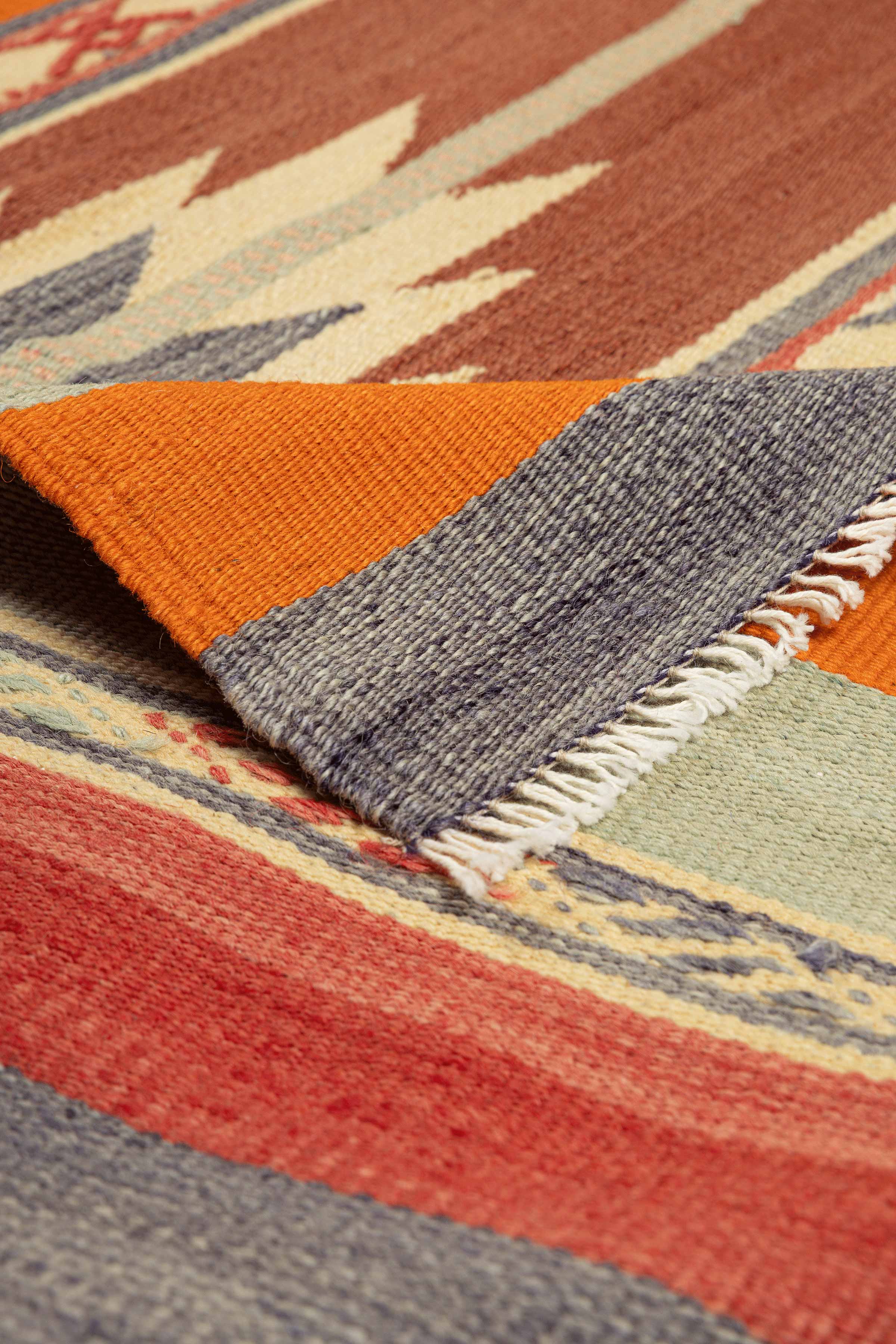
DENIZLI Vintage Kilim 280x87cm
DENIZLI Vintage Kilim 280x87cm
Wild Heart Free Soul
Kastanienallee 55
10119 Berlin
Germany
Striped kilim with nomad symbols in pastel
This handwoven vintage kilim comes from the Denizli region and was made in the 1960s. It was originally part of a so-called Üç-Kanatlı – a traditional, three-winged rug. The particularly fine, almost blanket-like wool makes it light and cuddly. Its elongated shape makes it perfect as a wall hanging, table runner, hallway runner, or in front of a kitchen counter. Its pastel colors bring light, airiness, and gentle symbolism to any room.
Symbolism in fine Cicim embroidery
- Göz (Eye): Protection & Perception
- İnsan (Human): Humanity, Connection & Compassion
- Muska (amulet): protection from evil
- Yıldız (Star): Luck & Destiny
- Buday (Wheat): Abundance & Livelihood
Colors & atmosphere
Mint, pink, black, orange, terracotta, and red – a delicate yet powerful color palette with a natural appeal. Ideal for calm, conscious spaces with warmth and depth.
Use & effect in the room
Thanks to its slim format (280 × 90 cm), this kilim is ideal as a wall hanging, table runner, hallway runner, or kitchen counter rug. For use on the floor, we recommend a non-slip rug underlay.
Restored & sun-clean
Like all our pieces, this kilim was carefully restored by Wild Heart Free Soul and cleaned with olive soap and sunlight – respecting its origins.
Choose options
- Unique – only made and available once
- Origin: Denizli, Anatolia , a place with a vibrant weaving tradition
- Period: Vintage / semi-antique – approx. 1960s
- Material: 100% fine sheep's wool, hand-spun – light, cuddly, natural
- Technique: Flatwoven by hand with Cicim embroidery
- Condition: Excellent vintage quality due to careful restoration
- Dimensions: 280 cm × 90 cm | Height: approx. 3 mm
Anatolian kilims are far more than mere textile objects – they are woven memories, personal messages, and expressions of living culture. For generations, women from nomadic tribes and villages wove their wishes, hopes, and stories into the fabric – freely, intuitively, and full of symbolic power.
This kilim, too, was woven in an Anatolian home—from the wool of the home's own sheep, sheared, washed, combed, and spun by hand. The yarns were often dyed with natural pigments such as madder, mignonette, walnut, or indigo—but from the 1950s onward, synthetic dyes increasingly found their way into the villages. The world became faster, more colorful—not every kilim remained purely plant-dyed. Many pieces from the 1960s and 1970s bear the traces of a cultural transition in their tones: between old and new, craftsmanship and modernity.
Weaving was a ritual act – accompanied by songs, stories, and silence. Often, several women sat together at the loom: mother, grandmother, sister, neighbor. Every knot, every line, every symbol carried meaning – protection, fertility, connection, power. Symbols such as the eye ( Göz ), the cosmic mother ( Elibelinde ), and the scorpion became carriers of profound messages.
They were used, loved, passed on – and some of them slept in chests for a long time until one day they came to light again.
Today, we clean and restore these pieces with the utmost respect: washed with olive soap, dried in the Antalya sun, and repaired in our Istanbul studio.
Some pieces are with us for only a few months, others stay with us for years – because we don't rush into anything. Each kilim is restored with time, care, and respect. Some wait for the right restorer, for the summer months to bathe in sunlight – for their quiet retransformation into a living work of art.
A kilim from Wild Heart Free Soul is not a product.
He is an inheritance. A woven wish.
And perhaps a companion for your home of tomorrow.
A kilim is a long-lasting companion—if treated with love and cared for carefully, it can last for many generations to come. It doesn't require extensive care, but rather the right kind.
We recommend gently vacuuming or beating the kilim once or twice a month to remove dust and dirt. Please do not use a rotary vacuum cleaner for this purpose; ideally, use a brush attachment or a gentle handheld device. Too frequent, intensive vacuuming can wear out the fibers over time.
Every few months, it's worth turning the kilim over and vacuuming the back as well. Rotating the rug slightly once a year ensures even wear and maintains the balance of the weave.
For basic cleaning, we recommend a professional hand wash every 3 to 5 years – using a pH-neutral shampoo or olive soap, gently worked in by hand, and thoroughly rinsed. Please never dry or steam clean your kilim – this will damage the fibers. If you need assistance choosing a suitable cleaner, we'd be happy to advise you. We work with experienced oriental rug specialists and are happy to share our special rates.
And if an accident does occur: Immediately dab fresh stains with a clean, dry cloth. If necessary, gently dab with a little olive soap and a slightly damp cloth – without rubbing or soaking. For stubborn stains, please consult a specialist immediately. Liquids that spread along the fibers can become permanently trapped, especially in flat weaves.
Dried food residue can usually be carefully scraped or brushed off – ideally with a steady hand and without haste.

